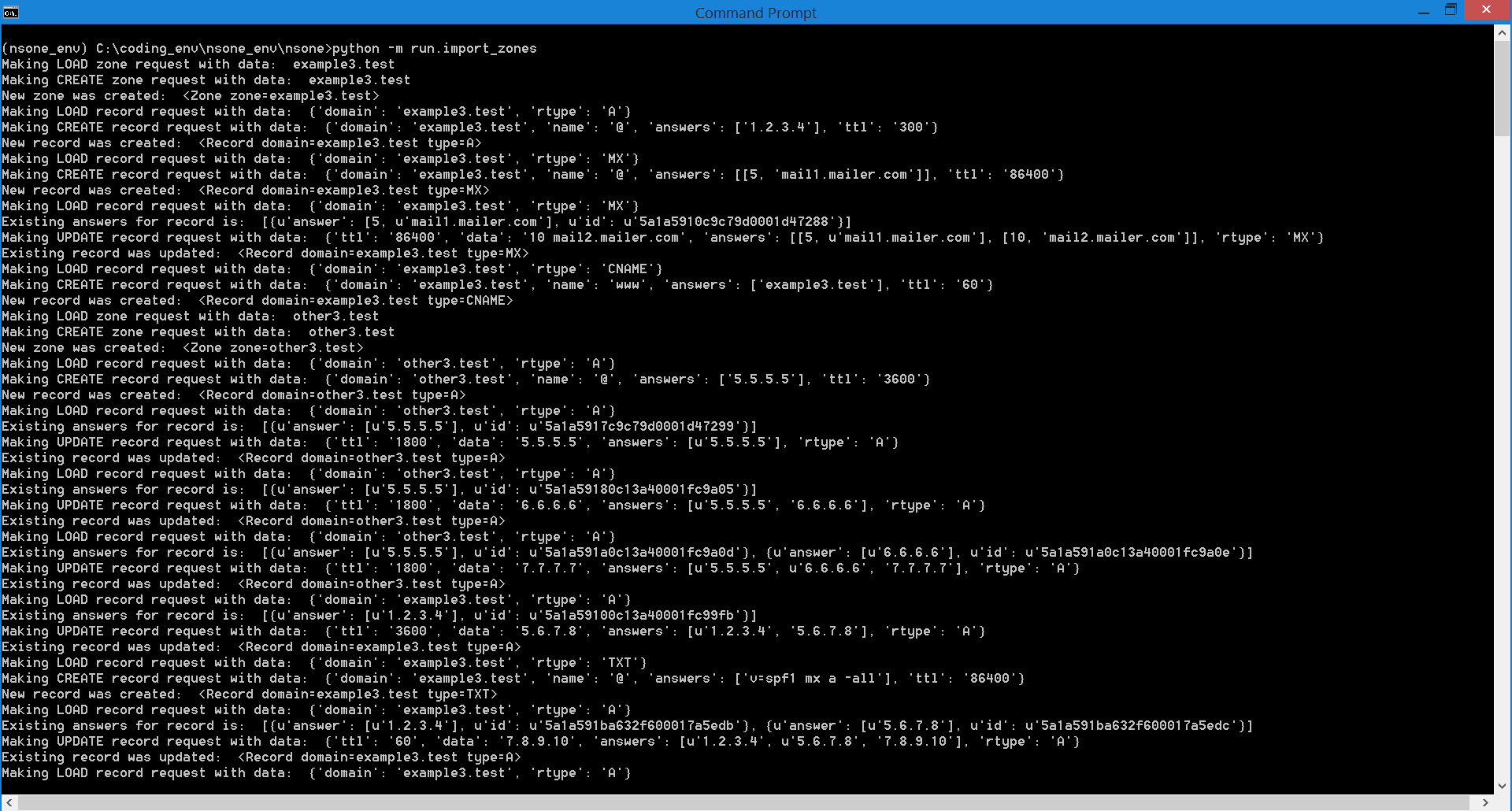This tool uses the NSOne Python SDK to create DNS records with the help of Python's Twisted asynchronous library
The script will loop through every line in the provided CSV file(located in /data). For each line it will use the NSOne SDK to see if an associated zone already exists, if so it can use the preexisting zone to add record to the zone, if not it will create a new zone.
Each request for zone is made asynchronously using Twisted and returns a deferred object. Call backs are used to capture flow of the program when the asynchronous requests return.
Most of the asynchronous DSN processing logic takes place in record_processing.py and zone_processing.py located within nsone/dns_processing directory
Once repo is cloned and requirements are installed: From the /nsone folder:
python -m run.import_zones
The logger class within nsone/shared/logger.py is configurable to turn off logging throughout the tool. If you wish to turn off any of the logging for a specific part of the program just change the corresponding value False.
class Logger(object):
...
log_config = {
"record_update": True,
"record_create": True,
"record_load": True,
"zone_update": True,
"zone_create": True,
"zone_load": True,
"record_request_create": True,
"record_request_update": True,
"record_request_load": True,
"zone_request_load": True,
"zone_request_create": True,
"existing_answers": True
}
- Setup a virtualenv:
virtualenv <your_env_folder_name> --no-site-packages
- cd into the folder you just created
cd <your_env_folder_name>
- Activate the virtual env On Windows:
cd Scripts
activate.bat
On Linux:
source bin/activate
- git clone this repo From within your_env_folder_name
git clone <clone link for this repo>
- Install requriements cd into cloned folder
cd nsone
install requirements
pip install -r requirements.txt
- Run script using -m switch From the /nsone directory
python -m run.import_zones
